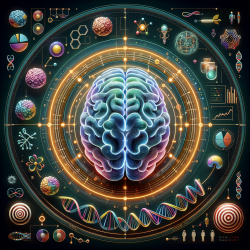Introduction
In the realm of speech-language pathology and therapeutic interventions, understanding the nuances of emotional recognition in children with callous-unemotional (CU) traits and impulsivity/conduct problems is crucial. Recent research titled "Reflexive Gaze Shifts and Fear Recognition Deficits in Children with Callous-Unemotional Traits and Impulsivity/Conduct Problems" provides invaluable insights into how targeted interventions can improve fear recognition, potentially fostering empathy and reducing antisocial behavior.
Understanding the Research
The study delves into the difficulties children with CU traits face in recognizing fear due to their tendency to avoid looking at the eye regions of faces, which are crucial for emotion recognition. The research highlights a two-part causal chain: personality traits influence face recognition strategies, and these strategies impact the ability to recognize fear in others.
Importantly, the study introduces a pilot intervention that demonstrated persistent improvements in fear recognition weeks after its completion, particularly in children with high CU traits. This suggests that the process of emotion recognition is malleable and can be enhanced through targeted training.
Implementing the Findings
For practitioners working with children exhibiting CU traits, this research offers a roadmap for intervention. Here are some practical steps to consider:
- Focus on Eye Gaze Training: Encourage children to focus on the eye regions of faces during emotion recognition tasks. This can be done through interactive online therapy sessions, which TinyEYE excels at providing.
- Reinforce Learning: Implement repeated eye-gaze instruction over multiple sessions to ensure sustained improvements in fear recognition.
- Monitor Progress: Use data-driven approaches to track improvements in emotion recognition and adjust interventions accordingly.
Encouraging Further Research
While the findings are promising, there is a need for further research to explore the long-term effects of these interventions and their impact on empathy and social behavior. Practitioners are encouraged to contribute to this growing body of knowledge by conducting studies within their own practice settings.
Conclusion
By leveraging the insights from this research, practitioners can enhance their therapeutic approaches, ultimately leading to better social outcomes for children with CU traits. This aligns with TinyEYE's mission to provide effective online therapy services that are grounded in evidence-based practices.
To read the original research paper, please follow this link: Reflexive Gaze Shifts and Fear Recognition Deficits in Children with Callous-Unemotional Traits and Impulsivity/Conduct Problems.










